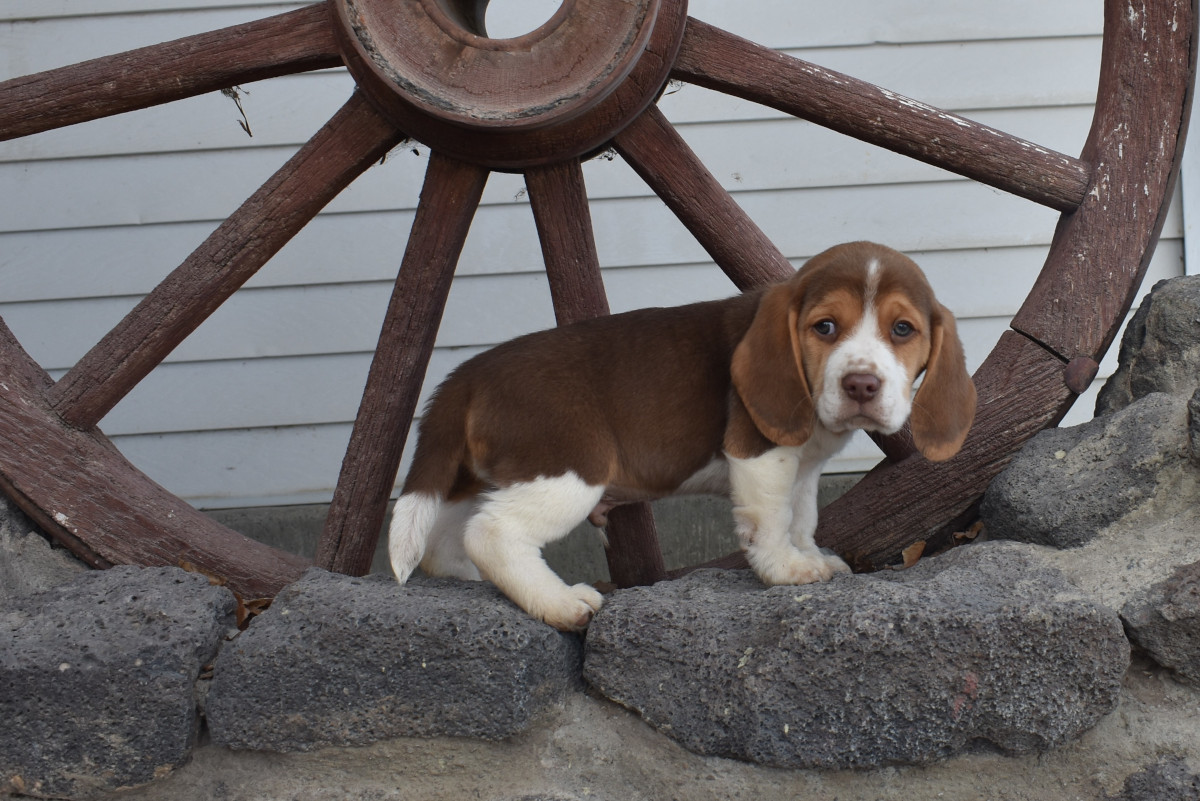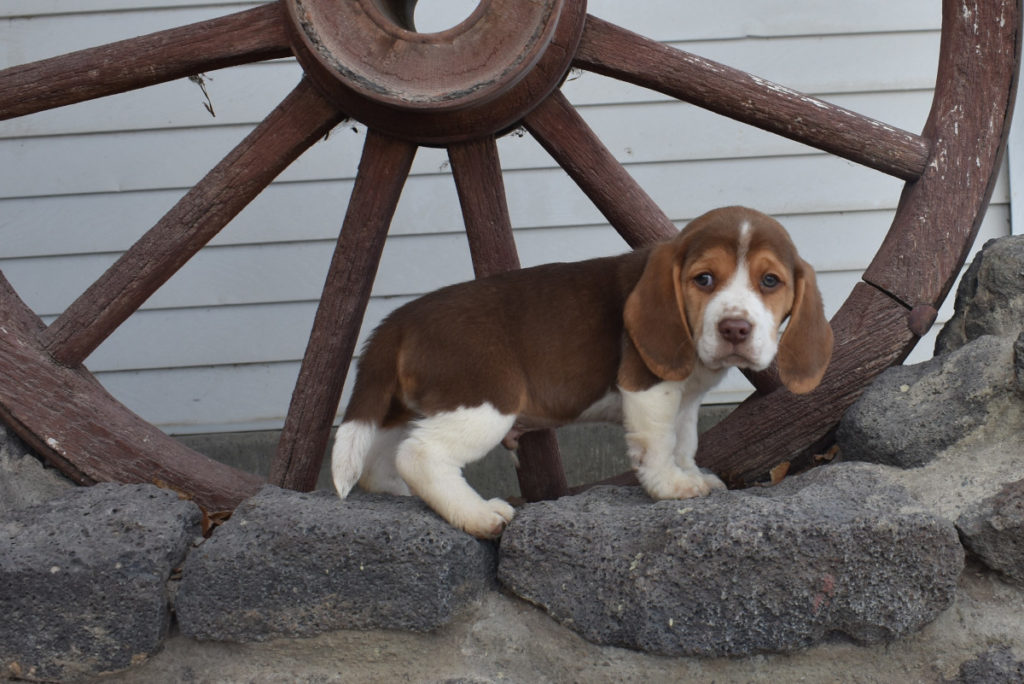
Brown Beagle puppies come in many different shades of brown. With so many variants, it can be hard to find the “right” brown Beagle that you are looking for.
However in this article, I do not want to focus on the different shades that can pass for brown, instead I want to focus on the generics of a brown Beagle. More specifically, I want to dive into what genes makes a brown Beagle puppy brown.
If you are interested in the different types of brown Beagles that are out there, feel free to check out these two articles titled: a brown bi color beagles and a brown tri color beagles.
Now for full discloser. I am by no means a genetic expert. Everything that will be in this article will be correct as far as I understand it.
If I do error on this subject, feel free to send me an email on the misinformation and I will quickly correct it.
Also another side note, I am writing this article on the assumption that a potential breeder is reading it. However, that does mean this article is not for you.
If you are curious about genetics, then you also might find this article worthwhile. Now with that out of the way, lets jump in.
It Takes More Then Breeding a Brown Beagle to get Brown Beagle Puppies
If I breed a tri-color Beagle to a brown Beagle, won’t at least some of the puppies be brown?
The answer is no. No wait, I think it might be yes. Hmm… I believe the answer depends greatly on the genes of the tri-color Beagle.
One thing to remember, is that black is the dominant or “default” color of a Beagle.
In order to get brown puppies from a tricolor black/white/tan beagle. That Beagle has to be a carrier of the brown recessive gene.
If they are not a carrier, then their puppies will also be black, white and tan. It’s not just a
tri-color Beagle that this is true for, but it goes for all Beagles.
I once read a post about a breeder who bred a brown Beagle with a lemon Beagle, by doing so he thought that the pups would come out brown or lemon.
When the puppies were born, he was surprised to discover that they where all classic tricolor puppies.
So what happened? Why did they come out classic tricolor and not lemon or brown Beagle puppies?
It is all about matching the right gene with the right gene. When different genes that affect color cannot match up, the the default color, black, will appear.
What Genes to Look For?
Before I dig into this question I would like to give credit to www.rabbitdogs.net. Their site was the site that got me started on discovering the different genes that effect the color of Beagles.
One thing that is important to remember: This will be a basic genetic guide, not an in depth one. If you are looking for an in-depth guide may I suggest going to: https://www.animalgenetics.us .
When it comes to genes the big letter represents the dominant gene while the little letter represents the recessive gene. Each puppy will receive one gene from each parent, making it so that each gene comes in pairs of two as shown in the image below.

The two genes that you want to look for when it comes to a brown Beagle puppy is the Locus E and Locus B. We will discuss the Locus E gene first.
The Locus E gene helps determine whether a dog can produce black or brown fur.
The big “E” means that the dog will be black or brown, while the little “e” means the dog will be yellow, tan or red.
The dominate gene “E” always triumphs the recessive gene “e”. From that knowledge we know that the big “E” from the above picture will dominate over the little “e”.
So this particular Beagle, since it is “Ee” will be either black or brown. If the beagles E-Locus gene was “EE” it would still be black or brown. The only difference is that both genes are dominate.
However if it’s genetics were recessive “ee” then the Beagle would be yellow to red. It also means that there would be no chance for the Beagle to be brown. A brown Beagle has to have at least one dominate gene E-Locus gene to produce black or brown fur.
That is why the E-Locus gene is important. Only a beagle with “EE” or “Ee” can have a chance at being brown. A “ee” beagle will never appear brown or black and will always be yellow to red.
An Important Note to Remember.
When it comes to breeding, the female dog will split their genes with the male dog. So if a dog with “EE” was bred to another “EE” dog all of their offspring would also be “EE”. That is all they can be. There is no other combination.
An “Ee” dog breed to an “EE” dog, would produce “EE” and “Ee” offspring.
So what would happen if a dominate “EE” tricolor Beagle was bred with a recessive “ee” lemon Beagle? Their offspring would be “Ee” or in other words, they would be tri color Beagle puppies with no lemons.
However if you bread a “Ee” tri color with an “ee” lemon. Their would be about a 75% chance that the puppies would be “ee” or lemon. The other 25% would be “Ee” or tricolor.
An “ee” dog bred with another “ee” dog will always give you “ee” puppies. There is no other combination. So in other words, a lemon Beagle bred with a lemon Beagle will give you lemon puppies.
“Remember, in order to get a brown Beagle puppy, you have to have at least one big “E”, at the E-Locus level.
Locus B Gene
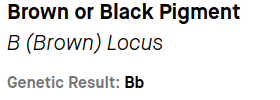
The Locus B gene is the gene we are most interested in when it comes to a brown Beagle puppy. The dominant gene “B” represents black”. The recessive gene “b” represents brown.
In order for a Beagle to be a brown Beagle, they have to possess both of the Locus B recessive genes. In other words, their genetic Locus B would have to be “bb”.
Beagles with a “bb” at the B Locus gene will produce brown pigment instead of black. Anything other then a “bb”, etc “Bb” or “BB”, would result in a normal black tricolor Beagle.
Both Parents Have to Be Carriers of The Recessive Brown Gene to Have Brown Beagle Puppies!
By now you might have discovered that both parents must carry the recessive brown gene “b” to have brown Beagle puppies.
To further illustrate this point lets break it down to hypothetical breeding match-ups.
Brown Male/Brown Female Beagle.
With this match, both dogs would be recessive at the locus B level. In other words, both would be “bb”. Their offspring would inherit one “b” from the father and the other “b” from their mother. Making them “bb” themselves.
In other words, breeding a brown Beagle with a brown Beagle would almost guarantee brown Beagle puppies every time.
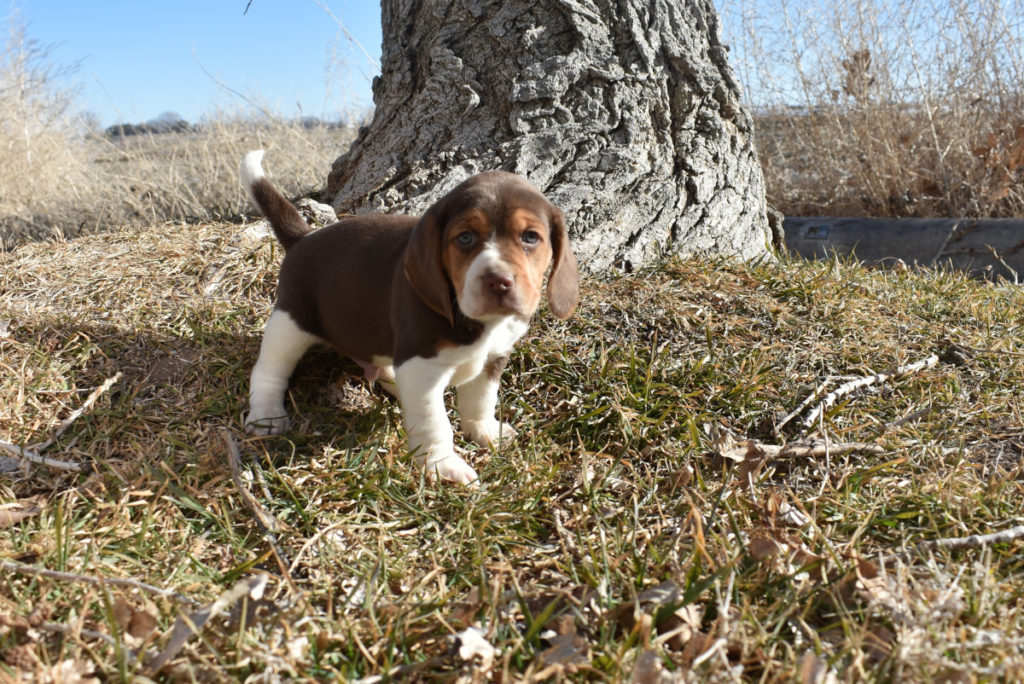
The reason I say almost, is that the first gene we talked about, the E-Locus gene, can mess it all up. Remember an “ee” puppy will not be either brown or black but yellow.
If your brown Beagles are both “Ee” at the E-Locus level, then there is a 1 in 4 chance that the small “e” will match up with each other giving you a lemon Beagle instead of a brown one.
The lemon puppy will still be “bb” at the B-Locus level. The only problem is that the E-Locus gene is dominate over the B-locus gene.
Therefore you will not be able to see the brown gene in the dog. There nose and eyes will be brown but their fur would be yellow.
Brown Male/TriColor Female Beagle.
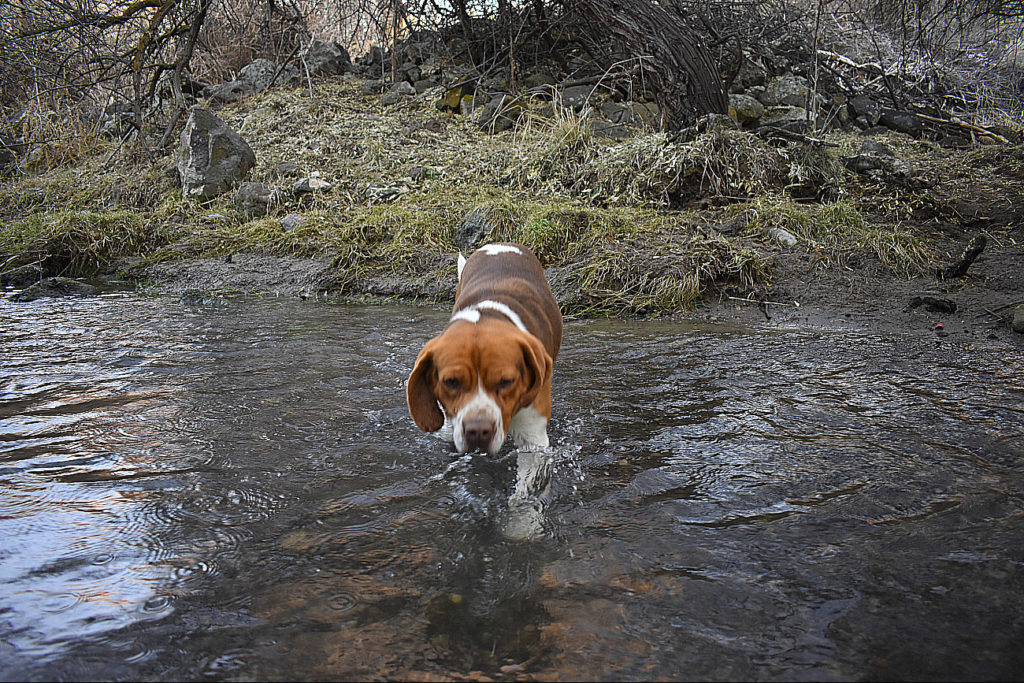
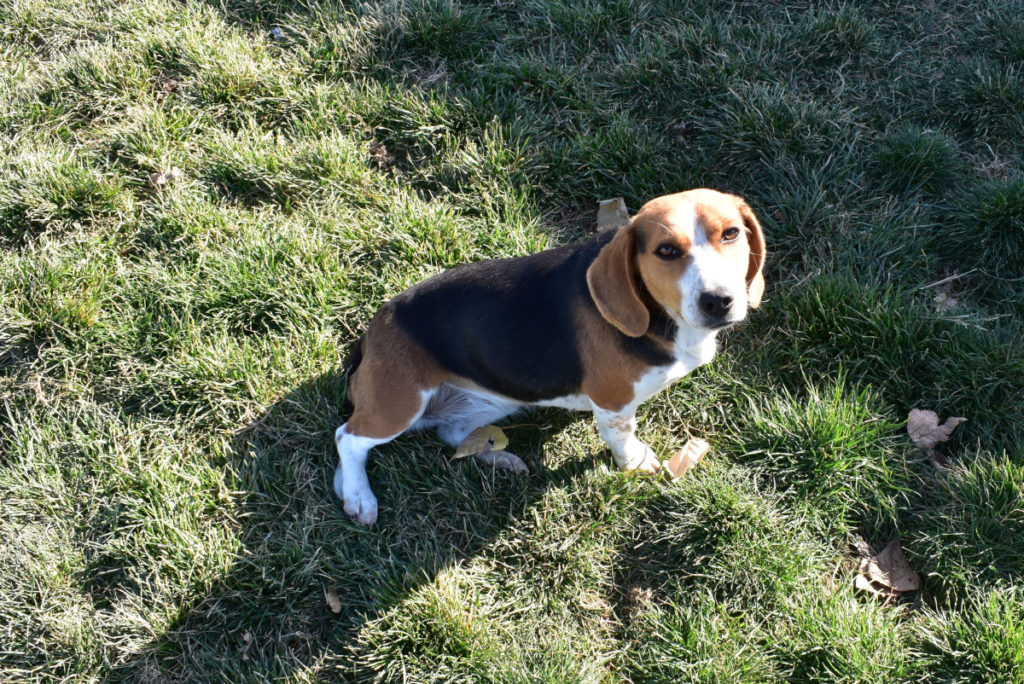
The tricolor female has to be a carrier of the brown gene. Their B-locus has to be “Bb” to have brown Beagle puppies.
If the mother is “Bb” and the father is “bb” then 2 of every 4 puppies should be brown, while the other would be black tricolor that carries the recessive brown gene.
If the tricolor female is “BB”, then all of the puppies will be tricolor. But all the puppies would be carries of the recessive brown gene.
TriColor Male/TriColor Female Beagle.
Yes, a tricolor and a tricolor can have a brown Beagle puppy. They both have to be carriers of the brown gene “Bb” for this to happen.
If they are both carriers then there is a 1 in 4 chance that they will have a brown puppy, of course that 1 in 4 is just the math and not a guarantee.
Brown Male/Lemon Female.
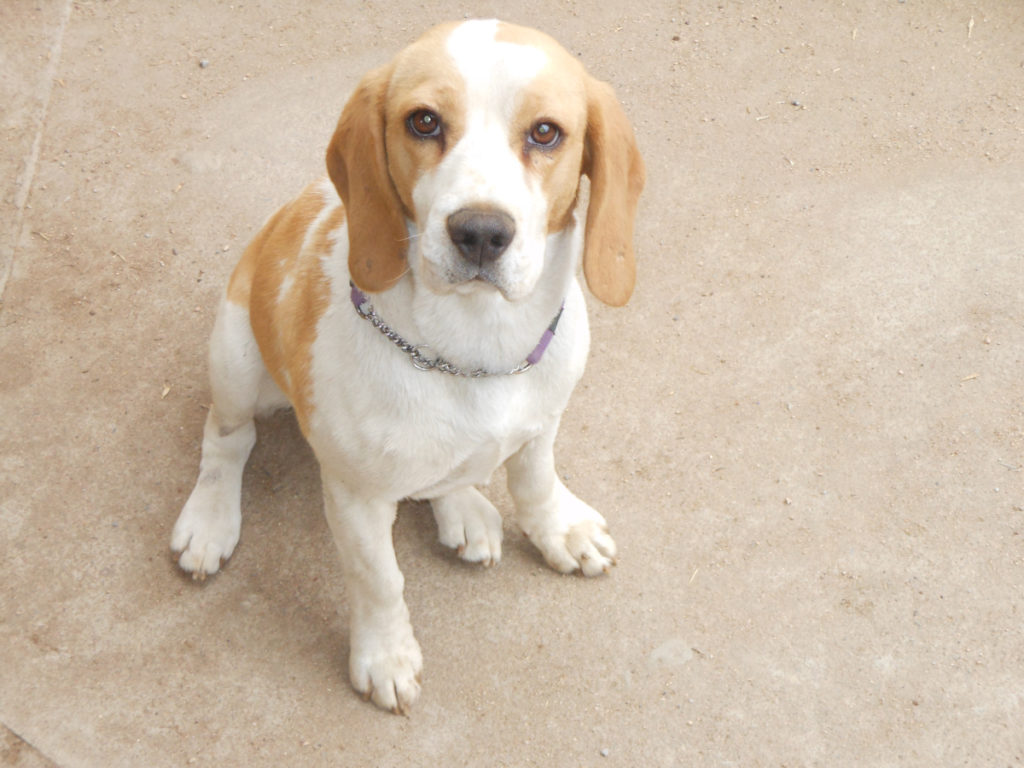
As we determined earlier, a lemon Beagle can carry the recessive brown gene.
The same concept applies as stated above. If she is “bb” then all the puppies would be “bb” at the B-locus level.
A “Bb” lemon would result in 3 out of every 4 puppies being “bb” at the B-Locus level, while 1 in every 4 would be “Bb” or black/tan/white.
If the lemon is “BB” then you would have no brown Beagles.
The only thing to remember with a lemon and a brown Beagle is that if the brown Beagle is “Ee” at the E-Locus level, then 3 out of 4 puppies would be lemon. The E-Locus gene is dominate so the brown gene would not show.
To make a full loop here, lets go back to the person who bred a lemon Beagle with a brown Beagle and got tricolor puppies. What happened?
What happened is just bad luck, that is what happened. It means that the brown Beagle was dominate “EE” so they couldn’t produce lemon Beagles.
It also means that the lemon was dominate “BB” so they couldn’t produce brown Beagles. So what is left? The default classic black/tan and white beagle.
How to Know if a Beagle Carries the “b” Recessive Gene?
Understanding the genetics of a dog will take out a lot of guessing and hoping when it comes to getting a brown Beagle puppy.
Genetics can be hard to follow and understand so let me take everything I talked about today and simplify it.
In order to successfully get a brown Beagle puppy, both parents have to be carriers of the brown recessive gene “b”.
How do you know if a Beagle carries the brown recessive gene? You can have a DNA test done on them, the results from the DNA test will let you know.
If you are buying a puppy, then DNA testing won’t be an option, so this is what you do. You get a Beagle who is brown. The brown Beagle gene has to both be recessive “bb”, there is no other option.
If you want a tricolor Beagle who carries the brown gene, then make sure you pick a tricolor where one of the parents is a brown Beagle.
Here at Jacobson Kennel we do just that. Are stud is a brown Beagle. All of his offspring, no matter the color, has to carrier the recessive brown gene. They have to, because that is all Cosmo has in him.
You can check out some of his offspring at: Past beagle litters. Most of them have been brown, but even the ones that are not, still carry the brown recessive gene. They have to. They have no other choice.

